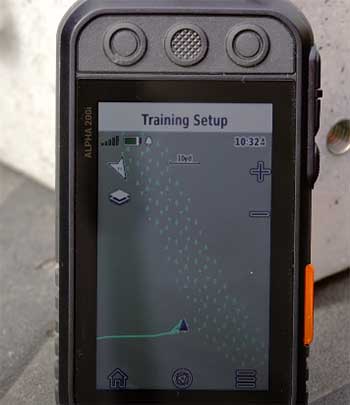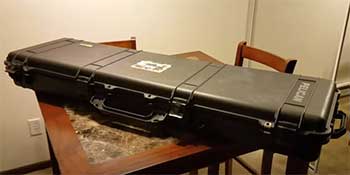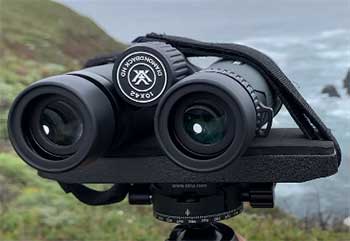The Garmin Alpha 200i is a popular GPS dog tracking system that allows hunters and pet owners to track up to 20 dogs from far distances. Using advanced GPS and GLONASS technology, the Alpha 200i provides accurate locations for your dogs in real-time.
While the Alpha 200i is feature-packed, like any electronic device it is prone to technical issues. In this guide, we’ll cover the most common Garmin Alpha 200i problems owners run into and provide troubleshooting tips to get your device working properly again.
Problems With Garmin Alpha 200i Dog Tracker
Here is a list of those issues:
- Difficulty Pairing/Syncing Collars to Handheld Unit
- Inaccurate or Delayed GPS Positions
- Short Battery Life in Collars and Handheld
- Losing Dog Locations/Dogs Appearing Offline
- Difficulty Pairing Alpha 200i with Other Garmin Devices
- Erratic or Unresponsive E-Collar Correction
- Buggy or Unresponsive Handheld Interface
- Difficulty Connecting Alpha 200i to Garmin Connect App
- Poor Radio Range with Collars and Handheld Unit
- General Lack of Accuracy
Let’s talk about them in detail.
Difficulty Pairing/Syncing Collars to Handheld Unit
One of the top complaints with the Alpha 200i is difficulty initially pairing or syncing the collars to the handheld unit. Without syncing, the handheld won’t pick up the collar locations and the system is useless.
Here are some troubleshooting tips for syncing Alpha 200i collars:

- Make sure the handheld device is powered on and has the latest firmware installed. Connect to Garmin Express if updates are available.
- Turn the collar on and hold it within 3 feet of the handheld unit during the syncing process. The closer, the better.
- On the handheld, go to the Dog List and select Add Dog. Enter the collar ID number and a name for the dog if prompted.
- If the unit isn’t finding the collar ID, select Scan For Collars and walk closer to the dog’s collar with the handheld.
- Replace the collar battery if it’s reporting low battery. Low charge can disrupt syncing.
- As a last resort, perform a hard reset on both the handheld and collar by holding the power button for 15 seconds. Then redo the pairing process.
Following this process closely while keeping the handheld in very close proximity to the collar usually resolves pairing issues.
Be patient during the process and redo it from scratch if needed.
Inaccurate or Delayed GPS Positions
Another common complaint is inaccurate or significantly delayed dog location updates on the handheld when in the field.
There are a few factors that can cause this:
- Damage or debris on antennas: Dirty or damaged antennas on the collar can interrupt GPS and GLONASS signal, leading to poor location performance. Inspect both the antenna at the top of the collar and the small magnetic antenna on the side. Clean them gently and ensure they aren’t cracked or peeling.
- Thick covering on dog: Certain harnesses, coats, or other heavy covering on the dog can block satellite signal reception, leading to spotty updates. Use lighter coverings when possible or attach the collar over the covering.
- Dense overhead cover: If hunting or hiking in dense woods, satellite signals may have a hard time penetrating heavy overhead tree cover. This can degrade performance. Move to clearer areas if possible when checking location.
- Outdated firmware/software: Make sure to connect the Alpha handheld and collars to Garmin Express regularly to get the latest firmware and software updates. Updates often improve performance and accuracy.
- Device needs hard reset: If location performance seems to deteriorate over time, do a hard 15 second reset on the handheld and collar units to refresh the devices.
Following proper troubleshooting steps for antenna and coverings, moving to clearer skies when checking location, and keeping firmware updated are the best ways to improve accuracy with the Alpha 200i system.
Short Battery Life in Collars and Handheld
The battery dying quickly on either the collars or handheld is another common grievance from owners.
For the dog collars, typical battery life is 20-40 hours depending on use before needing a recharge. There are a few ways to extend this:
- Switch collar to Power Saving mode when not actively tracking or training dogs. This turns off GPS temporarily.
- Consider upgrading to higher capacity lithium batteries, which may provide longer life than stock batteries.
- Turn off GLONASS mode if not needed. Using only GPS uses less power.
- Make sure the collar has the latest firmware, as updates improve battery optimization.
For the handheld unit, the Alpha 200i gets around 20 hours of battery life when fully charged. Tips for maximizing handheld charge:
- Switch to Battery Save mode to disable GPS/GLONASS when not tracking dogs actively.
- Turn down screen brightness when possible.
- Close apps and connections (Bluetooth, WiFi, radio etc) when not in use.
- Avoid storing in extremely hot or cold temperatures.
- Replace battery if capacity seems to diminish after years of use.
Getting additional batteries that you can swap in for both collars and handheld is also recommended for longer excursions. Bring extra charged batteries in the field. Proper battery maintenance goes a long way with the Alpha 200i system!
Losing Dog Locations/Dogs Appearing Offline
It can be frustrating if your dogs suddenly show as offline or their location updates stop reporting on the handheld unit when out tracking or training.
If this happens, there are a few steps to take:

- The collar battery may have died. Quickly replace batteries if possible.
- The handheld could be out of radio range if a dog is farther away. Move within 9 miles of the dog’s location.
- Reset the collar by holding the power button for 15 seconds if the unit seems “frozen”. This forces a reboot of the GPS.
- Ensure the handheld device is held vertically with a clear view of the sky for best reception.
- Check for any obstructions, overhead cover, or damage to the collar’s antennas as mentioned earlier.
- Verify proper fit of the collar around the dog’s neck so antennas maintain contact with skin.
- Collar may have gotten wet, which can cause temporary loss of connectivity. Dry it out completely.
- As a last resort, unpair and re-pair collar with handheld, which often fixes connectivity issues.
With proper troubleshooting and maintenance of both the dog collars and handheld device, you can minimize interruptions in tracking your furry friends!
Difficulty Pairing Alpha 200i with Other Garmin Devices
In addition to the dedicated handheld unit, the Alpha 200i collars can pair with certain Garmin handheld/portable devices like the GPSMAP 66i to provide dog tracking.
However, many users report frustrations and inconsistent results when trying to pair the Alpha collars with Garmin devices like the 66i, 68sci, Rino 750, or InReach gadgets.
Some tips for smoother pairing:
- Verify the Garmin device supports Alpha collar pairing by checking the user manual or calling Garmin support. Not all Garmin units have this capability.
- Perform any required firmware updates on BOTH the handheld device and the Alpha collar to sync versions.
- Factory reset both the Garmin device and Alpha collar before pairing to clear any confusion from previous setups.
- Follow the exact setup steps from Garmin for adding a tracking collar, entering the collar ID correctly when prompted.
- Keep the handheld and collar very close together (3 feet or less) when initiating pairing. The short-range wireless link can be flaky.
- Turn other connected devices like phones off/on airplane mode to avoid wireless interference.
- As a last resort, contact Garmin support to confirm if a specific device pairing should work or not. Some combinations they don’t recommend trying.
When in doubt, consult Garmin support to see if a Garmin gadget specifically supports Alpha 200i pairing before attempting. The setup process itself requires close proximity and eliminating other wireless interference in the area for success.
Erratic or Unresponsive E-Collar Correction
If you utilize the built-in electronic collar stimulation for training dogs with the Alpha 200i, you may occasionally experience inconsistent or unresponsive corrections.
Some potential causes include:
- Loose collar fit around the dog’s neck, leading to poor contact with correction probes. Fit collar snugly without chocking.
- Damaged or worn correction probes. Replace probes periodically as needed.
- Debris buildup or dirt on probes disrupting contact. Clean probes regularly.
- Rust/corrosion on probes if collar got significantly wet. May need replacement.
- Low collar battery causing weak stimulation. Charge collar battery fully.
- Attempting correction at range limit of handheld could lead to poor response. Get within standard range.
- Outdated collar/handheld firmware leading to wireless latency. Update firmware via Garmin Express.
- Defective collar receiver or antennae. May need Garmin service.
- Interference from other radio frequencies in the area. Move location and eliminate other wireless devices when training/correcting.
Consistently check collar fit, probe condition, battery charge level, firmware, and wireless interference to improve e-collar performance. Contact Garmin support if problems persist after troubleshooting.
Buggy or Unresponsive Handheld Interface
Like most complex electronic gadgets, the Alpha 200i handheld can suffer from buggy behavior or an unresponsive interface/buttons from time to time.
Some common tips if this occurs:
- Let the device fully drain then recharge battery to recalibrate.
- Perform a force reboot by holding the power button down for 15+ seconds.
- Reset the device to factory settings if bugs persist after rebooting. Backup data first.
- Update to latest firmware via Garmin Express to fix any known bugs.
- As a last resort, contact Garmin Support for handheld replacement if it appears faulty.
Handheld devices freeze or misbehave occasionally, especially with low battery charge. Rebooting, resetting, and updating the firmware are first steps before replacement.
Difficulty Connecting Alpha 200i to Garmin Connect App
The Garmin Connect app lets you sync data from the Alpha handheld to view and analyze on your smartphone or computer. But some users report difficulty getting the Alpha to connect to the app properly.
Here are some steps to resolve connection issues with Garmin Connect:
- Ensure Bluetooth is enabled on both the handheld and your phone pairing with it. This allows the data connection.
- Update the Connect app and handheld unit software to latest versions, as older firmware can cause conflicts.
- Bring the handheld and phone within 30 feet with no obstructions during setup. The Bluetooth link can be weak.
- Turn the handheld off and back on before trying to pair again. Rebooting helps recognition.
- Delete previous failed pairings and clear app data/cache before re-pairing from scratch.
- Disable any battery saver modes on the phone that could put Connect app to sleep. Allow constant operation.
- As a last resort, contact Garmin support to confirm proper pairing procedures for your specific Android/iOS device if issues persist.
With some patience and by methodically covering the steps above to eliminate variables, getting a solid Bluetooth pairing between the Alpha 200i and Garmin Connect app is very achievable for reviewing dog data and stats.
Poor Radio Range with Collars and Handheld Unit
The Garmin Alpha 200i uses advanced radio telemetry between the collars and handheld to provide real-time dog tracking up to 9 miles away. But in practice, some hunters report much poorer range, with tracking cutting out at 1/2 mile or less.
If your Alpha has disappointing radio range, try these tips:

- Update the collar, antenna, and handheld to latest firmware which can improve range.
- Replace alkaline batteries with lithium batteries for optimal power, both in collar and handheld.
- Make sure handheld is held vertically to allow the internal antenna best reception. Don’t cover antenna area.
- Remove harness, coats, etc from dogs that could block embedded collar antenna.
- Use a Garmin recommended external handheld antenna upgrade for even better reception.
- Move handheld to highest elevation possible to clear obstructions between you and dog.
- Determine if certain dogs consistently drop out at shorter distances. May indicate defective collar. Swap to verify.
- Avoid using Alpha near sources of radio frequency like power lines that could interfere with signals.
While rated at 9 miles, real-world range depends greatly on optimizing battery power, firmware, line-of-sight obstructions, and interference mitigation.
Test in optimal conditions with updates applied to determine maximum range capabilities before assuming poor performance.
General Lack of Accuracy
Possibly the most serious complaint about the Garmin Alpha 200i system is a perceived general inaccuracy in reported dog locations, with dogs showing much farther away from their actual position.
There are a few aspects that influence accuracy:
- Location errors are more pronounced the farther away dogs are from the handheld unit due to “drift”. Positions are most accurate under 1 mile.
- Thick overhead tree canopy or solid obstructions degrade GPS reception, throwing off reporting. Move to clearer areas.
- Let dogs establish steady lock before assessing accuracy. Readings fluctuate more in the first minute after a fix.
- Certain GPS conditions like solar flares or atmospheric anomalies can temporarily degrade accuracy.
- Ensure both handheld and collars have latest firmware installed for most up-to-date tracking capabilities.
- Consider replacing collar batteries annually as diminished battery performance can alter reporting accuracy over time.
While satellite-based GPS tracking is never 100% perfect down to the foot, proper use of the Alpha 200i in ideal conditions typically yields good performance for most hunting or working dogs applications. But understanding the above factors can help optimize your setup.
Also Read: Differences Between Garmin Sport Pro And Pro 550 Dog Collars.
Frequently Asked Questions (FAQ)
For hunters who regularly use multiple hunting dogs at once and want to closely track positions or train dogs from afar, the Alpha 200i system is generally worth the investment. The ability to monitor 20+ dog locations in real-time from miles away can be invaluable.
But for single dog owners who just want basic activity tracking or geo-fencing, a GPS dog collar from another brand like Whistle may provide sufficient capabilities at a lower cost. Understand your specific needs before purchasing.
To completely factory reset the Alpha 200 handheld unit, hold down the power button for at least 15-20 seconds until the screen goes black. Keep holding until it powers back on. This wipes all data and restores default settings. You’ll have to repair the collars afterwards.
For the dog collar device, hold the power button down for 10-15 seconds until the status LEDs flash rapidly. Similar to the handheld unit, this fully resets the collar to factory condition for re-pairing.
Yes, the Alpha 200i does support setting up custom geofence boundaries that can trigger auto-alerts on the handheld unit if a dog exits a pre-defined area.
To set this up, trace the desired geofence polygon on the handheld map using waypoints. Configure the geofence settings like enabling auto-alerts. The handheld will then alert you if a paired dog crosses this geofence perimeter.
The Alpha 200i improves upon the previous Alpha 100 model in a few key ways:
1. Can track up to 20 dogs compared to 10 dogs on Alpha 100
2. Added GLONASS support for more accurate GPS tracking
3. Integrated BarkLimiter stimulus for bark control
4. Improved range of up to 9 miles
5. Brighter, higher resolution touchscreen display
6. Supports more map types and dog statistics
So in general, the Alpha 200i represents a solid upgrade from the 100 model in core capabilities, especially the larger dog pack support and GLONASS tracking. But the 100 remains a solid unit in its own right.
Conclusion
While the Garmin Alpha 200i has proven to be a game-changing GPS tracking system for hunters and working dog owners, it still comes with its share of technical hiccups and glitches.
Hopefully this breakdown of the most common real-world issues provides helpful troubleshooting tips to keep your Alpha unit operating properly.
Proper maintenance, updating firmware, understanding environmental limitations, and learning the device’s quirks can go a long way to creating an enjoyable experience tracking your favorite furry companions over miles of terrain.


